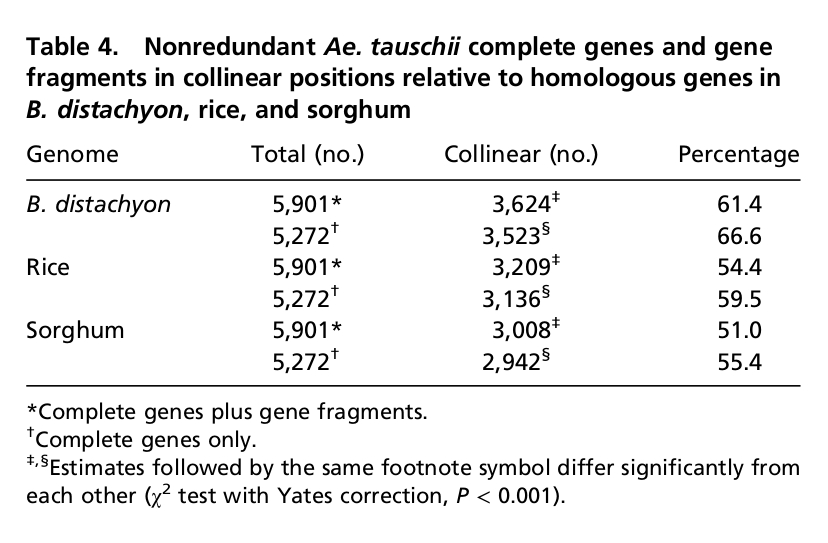|
|
|
Close Help | ||||||||||||||
A 4-gigabase physical map unlocks the structure and
evolution of the complex genome of Aegilops tauschii,
the wheat D-genome progenitor
Ming-Cheng Luo, Yong Q. Gu, Frank M. You, Karin R. Deal, Yaqin Ma, Yuqin Hu, Naxin Huo, Yi Wang, Jirui Wang, Shiyong Chen, Chad M. Jorgensen, Yong Zhang, Patrick E. McGuire, Shiran Pasternak, Joshua C. Stein, Doreen Ware, Melissa Kramer, W. Richard McCombie, Shahryar F. Kianian, Mihaela M. Martise, Klaus F. X. Mayer, Sunish K. Sehgal, Wanlong Li, Bikram S. Gill, Michael W. Bevan, Hana Šimková, Jaroslav Doležel, Song Weining, Gerard R. Lazo, Olin D. Anderson, and Jan Dvořák
The current limitations in genome sequencing technology require the construction of physical maps for high-quality draft sequences of large plant genomes, such as that of Aegilops tauschii, the wheat D-genome progenitor. To construct a physical map of the Ae. tauschii genome, we fingerprinted 461,706 bacterial artificial chromosome clones, assembled contigs, designed a 10K Ae. tauschii Infinium SNP array, constructed a 7,185-marker genetic map, and anchored on the map contigs totaling 4.03 Gb. Using whole genome shotgun reads, we extended the SNP marker sequences and found 17,093 genes and gene fragments. We showed that collinearity of the Ae. tauschii genes with Brachypodium distachyon, rice, and sorghum decreased with phylogenetic distance and that structural genome evolution rates have been high across all investigated lineages in subfamily Pooideae, including that of Brachypodieae. We obtained additional information about the evolution of the seven Triticeae chromosomes from 12 ancestral chromosomes and uncovered a pattern of centromere inactivation accompanying nested chromosome insertions in grasses. We showed that the density of noncollinear genes along the Ae. tauschii chromosomes positively correlates with recombination rates, suggested a cause, and showed that new genes, exemplified by disease resistance genes, are preferentially located in high-recombination chromosome regions.
